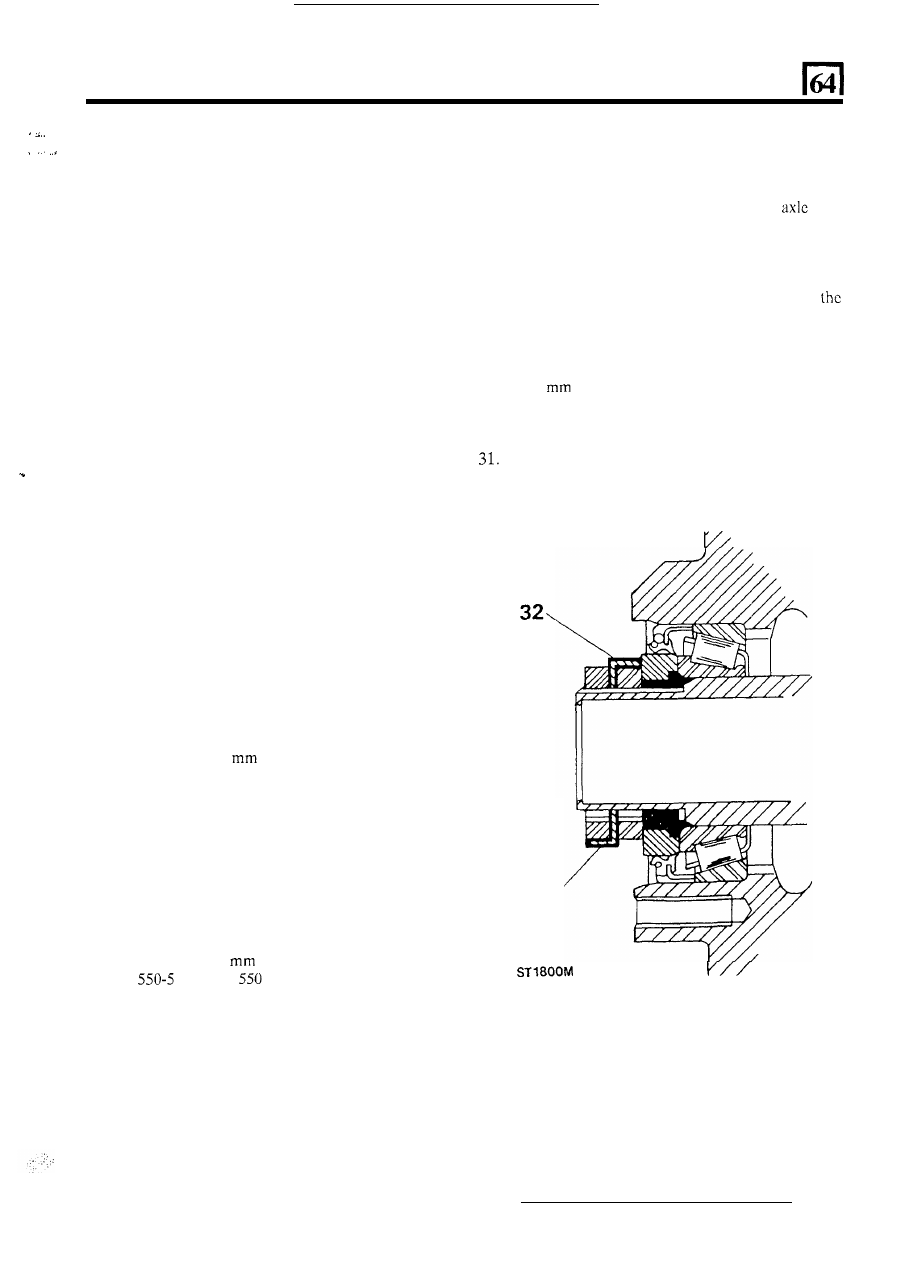Defender 90 / 110 / 130. Manual - part 116

SUSPENSION
...
11. Remove the inner seal and bearing cone.
12. If new bearings are to be fitted drift or press out the
old cups.
13. Degrease and examine the hub for cracks and
damage and renew
if
necessary. Renew hub
if
wheel studs are faulty.
Assemble
14. If removed, fit the stub axle to the axle casing with
a
new joint washer and secure with the six nuts and
bolts and tighten to the correct torque.
15. Fit new inner and outer bearing cups
to
the hub,
ensuring that they are drifted
or
pressed squarely
into position.
16. Fit the inner bearing cone and pack with one of the
recommended hub greases.
Fitting inner oil seal
17. Clean the hub oil seal housing and ensure that the
seal locating surface is smooth and the chamfer on
the leading edge is also smooth and free from
burrs.
18.
Examine the new seal and ensure that it is clean,
undamaged and that the garter spring is properly
located. Even a small scratch on the seal lip could
impair its efficiency.
19. Although the new seal is already pre-greased by
the manufacturer, apply one
of the recommended
hub bearing greases to the outside diameter
of the
seal, before fitting, taking care not to damage the
lip.
20. Place the seal, lip side leading, squarely on the hub
and using the
76
end
of
seal replacer tool
LST 550-5
and drift
550 or
18 G
134 drive the seal
into position to the depth determined by the tool.
Fitting outer oil seal
21. Fit the new outer bearing cone and pack with one
of the recommended hub greases.
22. Carry out instructions
17
to
19 but insert the seal
with the lip side trailing.
23. Place the seal, lip side leading, squarely on the hub
and using the
72
end
of seal replacer tool
LST
and drift
or 18 G 134, drive the seal
into position
to the depth determined by the tool.
Fitting hub to stub axle
24. Smear the lips
of both seals with one
of the
recommended greases.
This is important since a
dry seal can be destroyed during the first few
revolutions
of
the hub.
25.
Select a new seal track spacer and check that the
outer diameter is smooth and free from blemishes
26.
Taking care not to damage the seal lips fit the hub
assembly to the stub axle.
Do
not allow the weight
of the hub
to rest, even temporarily,
on
the outer
seal otherwise damage and distortion could occur.
Therefore hold the h u t clear
of the stub
until
the seal track spacer is fitted.
27. Carefully fit the seal track spacer, seal lip leading.
28.
Fit the hub inner nut and using spanner 606435
tighten the adjusting nut whilst slowly revolving
the
hub until all end-float is removed then back-off
nut approximately half-a-turn.
29. Mount a dial test indicator and bracket
on
the hub
so that the stylus rests in a loaded condition on the
nut. Check the end-float which must be
0,013 to
0,010
(0.0005
to
0.0004 in). Adjust the nut as
necessary to achieve this.
30, Fit the locker and locknut and tighten against the
adjusting nut.
Rotate the hub several times to settle the bearings
then re-check the end-float.
32. Bend one segment
of the locker over the adjusting nut
and another, diametrically opposite, over the locknut.
,
32’
33. Using a new joint washer, fit the hub driving
member and secure with the five bolts and tighten
evenly to the correct torque.
34. Fit the circlip to the axle shaft ensuring that it is
properly seated in the groove.
35. Fit the
hub
cap.
36. Fit the road wheels and secure with the nuts.
Jack-up the vehicle, remove axle stands and lower
vehicle to ground. Finally tighten the road wheel
nuts to the correct torque.
and that there are no burrs
on the chamfered
leading edge.
11